Categories: Featured Articles » Interesting electrical news
Number of views: 33784
Comments on the article: 2
How to provide comfort with insufficient power supply
6 differences between a priority relay and a load optimizer
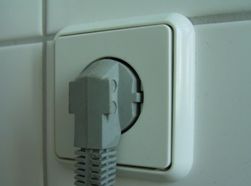 To begin with, the OEL-820 power load optimizer is the newest type of device familiar to specialists - the non-priority load disconnect relay, and the only one in the world designed for domestic use. Therefore, we will consider the traditional and new device, as a group of devices that solve the same problem.
To begin with, the OEL-820 power load optimizer is the newest type of device familiar to specialists - the non-priority load disconnect relay, and the only one in the world designed for domestic use. Therefore, we will consider the traditional and new device, as a group of devices that solve the same problem.
For different manufacturers, these devices are also called: priority relay, non-priority load relay, priority load relay, etc.
Priority switchboards help in a situation when, when several energy-intensive consumers are turned on, the total power consumed by them exceeds the limit of allowed power. Priority switchboards are installed at the input to the electrical panel. Their principle of operation is to continuously monitor the power consumed by all consumers used and to automatically turn off non-priority loads when the set limit is exceeded.
The disconnection algorithm and the load disconnection time can be different, but the essence is the same: to reduce the power consumption, which has already exceeded the allowable limit, it is urgent to disconnect some electrical appliance. One or more. At the same time, shutdown is carried out “blindly”, without taking into account the consumption values of specific electrical appliances.
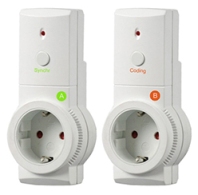
OEL-820A & B
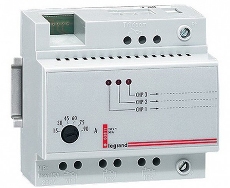
Priority relay
Priority switchboards allow avoiding the operation of the opening circuit breaker, which is installed to control the maximum power consumption. Although, with significant and frequent overloads, shutting down the introductory machine cannot be completely excluded.
The installation of a priority relay in an existing power grid is associated with a large amount of work on the modernization of wiring and electrical panels. This requires the appropriate qualifications of an electrician, accurate calculation and adjustment of current and disconnecting power of non-priority loads. And the laying of individual wire lines from the switchboard to outlets with non-priority consumers entails also the work of repairing the premises if wall chipping was used.
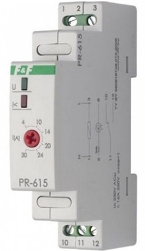
Current relay
The above switchboard automation devices cannot be connected to standard wiring that does not have separate wire lines to outlets. Their use is also contraindicated in completed construction facilities, where the installation of new wiring is impossible or undesirable.
The task was simplified with the advent of a new type of priority relay, the so-called OEL-820 power optimizer.
The principle of operation of the OEL-820 power supply optimizer is to redistribute power between two electrical appliances depending on their priority. Disabling priority over non-priority during operation, enabling non-priority during a pause in the priority working cycle.

An important feature of the OEL-820 is that at any given time one and only one electrical appliance from a pair can be turned on. As you can see from the way of work, the optimizer of the load on the power supply network, unlike its shield counterpart, never allows network congestion. He prevents her.
The OEL-820 is designed for use in the DIY format and does not require installation. This device is not a shield device, and consists of two socket adapters with a plug and a socket. One for priority load, the second for non-priority. Communication between adapters over the air. Adapters are plugged into regular outlets, and start working right away, without any settings. Adjustments are not required during operation.
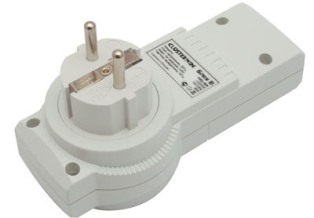
For operation of the OEL-820, not only separate wiring is required, but also no information control bus, since a radio channel with digital coding and constant monitoring of the passage of command packets is used to transmit telemetry signals.
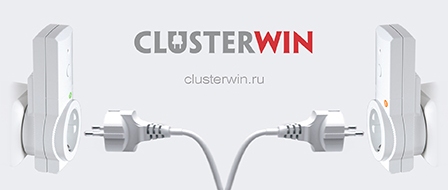
The new household appliance is gaining increasing popularity, both among homeowners and among electricians, who use it to very easily “resolve” rather difficult situations associated with exceeding the limit of allowed power (to reduce the total power consumption and wiring load). The device is in demand in gardening associations, as well as in summer cooperatives that have problems with the lack of power allocated for home ownership.
However, with a similar technical result, these two automation devices have a number of fundamental differences, which are worth recalling.
Main differences of OEL-820 from switchboard priority relays
Switchboard priority relay against several OEL-820.
A fight without rules?
Recall the way the optimizer works. Instead of controlling the total current consumption of all the loads at the input, and if the permissible value is exceeded, disconnecting individual non-priority lines, like a priority switch relay, in the OEL-820 CLUSTERWIN load optimizer, the consumption of only one pair of powerful electrical appliances is monitored. But, it is controlled with an accurate predicted result.
Therefore, the most interesting thing happens when using several OEL-820. When, each pair of electrical appliances connected to the corresponding OEL-820 units can be compared with one layer of a pyramid or a branch of a power consumption tree.
Several independent horizontal layers of the pyramid (blocks A and B OEL-820 with loads) are, as it were, strung on one common axis or tree trunk, which is wiring in the house. A matrix or table is formed with the previously known powers of the used electrical appliances. Each row of the table contains cells with the exact consumption values of each of the electrical appliances, one of which is assigned priority, and the other non-priority. Moreover, at any moment of time, one, and only an electrical appliance, can be included in this pair.
This is very important because it gives us the key to accurately planning the maximum total energy consumption!
Based on the data in the table, it is easy to calculate the maximum power consumed by consumers simultaneously turned on. One in each line. One in each pair.
Thus, the total power consumption can easily be reduced by almost half (!), And the power of the mains, as it were, would be increased by the amount of released energy! Almost, because you always need to leave a small margin, for example, for lighting devices or for other needs.
You can illustrate the new technology with the simplest example.
For example, in a house with a supplied power of 5 kW, you need to operate the following electrical appliances:
-
0.5 kW electric convector - 1 pc., (pantry)
-
0.5 kW electric convector - 1 pc., (entrance hall)
-
1,2 kW electric convector - 1 pc., (bedroom)
-
1.2 kW electric convector - 1 pc., (kitchen)
-
2 kW electric convector - 1 pc., (living room)
-
electric kettle 2.0 kW - 1 pc.
-
1 kW borehole pump - 1 pc.
-
storage water heater 1 kW - 1 pc.
Total: 9.4 kW.
The inclusion of eight electrical appliances can be done using four optimizers OEL-820. Electrical appliances located on one horizontal line of the circuit shown are connected to one optimizer.

The example shows that the total power of electrical appliances amounted to 9.4 kW. But, their real total power consumption for all possible combinations of inclusion, will never exceed 4.7 kW! This is obvious, since in each line of the "tree" / "pyramid" only one electrical device can be turned on.
Now you don’t need to run to the electrical panel in the hallway, into the garage ... Or climb onto the pole, and turn on the “knocked out” machine. You don’t need to wall the wall and lay new wires to connect an additional electric convector or oil cooler, and then do the repair! No need to draw extra power!
The torment of homeowners ended with the advent of the OEL-820 CLUSTERWIN power optimizer! Just turned it on - and it works!
Yuri Shurchkov
See also at bgv.electricianexp.com
:

